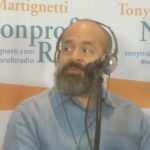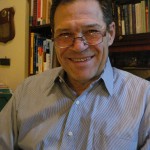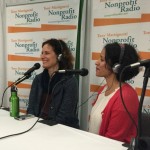
I love our sponsors!
WegnerCPAs. Guiding you. Beyond the numbers.
Cougar Mountain Software: Denali Fund is their complete accounting solution, made for nonprofits. Claim your free 60-day trial.
Turn Two Communications: PR and content for nonprofits. Your story is our mission.
Get Nonprofit Radio insider alerts!
Listen Live or Archive:
- On Fridays at 1pm Eastern: Talking Alternative Radio and tune in
- Listen to the October 11, 2019 archived podcast
My Guest:

Gene Takagi: Recruiting Your Board Members
Gene Takagi returns with 12 tips, ideas and strategies you can use in board recruitment. We’re talking expectations, motivations, commitment, requirements, and more. He’s our legal contributor and principal of NEO, the Nonprofit and Exempt Organizations Law Group.
Top Trends. Sound Advice. Lively Conversation.
Board relations. Fundraising. Volunteer management. Prospect research. Legal compliance. Accounting. Finance. Investments. Donor relations. Public relations. Marketing. Technology. Social media.
Every nonprofit struggles with these issues. Big nonprofits hire experts. The other 95% listen to Tony Martignetti Nonprofit Radio. Trusted experts and leading thinkers join me each week to tackle the tough issues. If you have big dreams but a small budget, you have a home at Tony Martignetti Nonprofit Radio.
Get Nonprofit Radio insider alerts!
Sponsored by:
View Full TranscriptProcessed on: 2019-10-11T21:35:12.007Z
S3 bucket containing transcription results: transcript.results
Link to bucket: s3.console.aws.amazon.com/s3/buckets/transcript.results
Path to JSON: 2019…10…461_tony_martignetti_nonprofit_radio_20191011.mp3.503818562.json
Path to text: transcripts/2019/10/461_tony_martignetti_nonprofit_radio_20191011.txt
Hello and welcome to Tony martignetti non-profit Radio. Big non-profit ideas for the other 95%. I’m your aptly named host. Oh, I’m glad you’re with me. I’d suffer the embarrassment of wheel if I if you irritated me with the idea that you missed today’s show recruiting your board members. Jean Takagi returns with 12 tips, ideas and strategies you can use. Inboard recruitment will get those many of them as we can. We’re talking expectations, motivations, commitment, requirements and Maur. He’s our legal contributor and principle of neo the non-profit and Exempt Organizations Law Group on 20 steak, too. I’ve never been so insulted in all my life. Responsive by Wagner, C. P A. Is guiding you beyond the numbers. Witness cps dot com But Cougar Mountain Software, Denali, fundez They’re complete accounting solution made for non-profits Tony dahna may slash Cougar Mountain for a free 60 day trial and by turned to communications, PR and content for non-profits. Your story is their mission. Turn hyphen to dot CEO. And as I’m reading, I realize that the embarrassment of wheel we had that last week. So again, as I’ve said, uh, I’m in desperate need of an intern. So I have someone to blame for these mistakes. So so sorry we didn’t get ah updated sickness for you this week. Uh, no one to blame but myself, which is the problem. That’s why I need interns. Um, let’s let’s bring on Jean. I feel, uh, we’ll rescue everything for us. You know who he is? He’s the managing attorney of Neo non-profit Exempt Organizations Law Group in San Francisco. He edits the wildly popular non-profit Law block dot com. And in 2016 he was the American Bar Association’s outstanding non-profit lawyer. He’s at G. Tak Jean, help me out here, please. How are you? I’m doing great. How are you? Very well. You sound strong and powerful. And Vural and enthusiastic. I love it. Thank you. I need that. I need that after my real mistake. Um, So you, uh you have Ah, pretty lengthy. Uh, interesting block post that we’re gonna turn over a little bit, but you know, it’s you. You wrote something for individuals who are contemplating boardmember ship, but we’re gonna turn the tables on it on talk about non-profits or contemplating recruiting board members. And what? What advice you’ve got in that in that regard? Does that sound right? Yeah, that sounds great. Yeah. Go. You’ve, uh you’ve been working with boards and board members for how many decades now? Um, a couple decades. Yeah. Yeah. So you know what you’re talking about. You You’re on your ANA least one board that I know of. Are you on more than one board currently on a couple boards and a few committees that are non board committees, but staying pretty active. Yeah. No, I know. I’m tryingto I just wanna, uh, establish the bona fide. He’s I mean, you’re not just not just a theory for you. You’re actually practicing it and keeping, ah, keeping real boards feet to the fire. Right. You’re not just not in a vacuum. This is real life for you. So yeah, both both the legal adviser to some boards and then sitting in the fire as the boardmember. I’m not sure I’d want to be on a board that you are a boardmember of you. Would you hold this will? You would hold us to high standards. I I certainly aspire to high standards. I don’t know if I achieve them often or ever, but I aspired to them. So I guess, Yeah, you we wouldn’t clash or anything if you were on the same board. I would I would respect you. I just would be annoyed that you’re always telling us that, you know, we’re not We’re not reaching the right standards of governance or you’re failing your failing the the the requirements of of the duties, the three duties. And and you’re not fulfilling your responsibilities as board members. I would, you know, I would respect you. Um, and I would I would aspire to do better in your words. I would. I would. Yeah. Totally trying not to be that type of boardmember. Well, but you’d be hard. You know, we all know those boardmember. Yeah, but will be hard for you to turn it off. I mean, you know, you’re you’re a fiduciary to the organization. You have. You know, it would be hard for you to turn it off. I could tell it would. All right. Um, So let’s see. So we’re starting with, you know, starting with some of the basics. Um, you want you want to make sure that people understand what? What they’re taking on what responsibilities The three duties, which you’re, um, loyalty, care and obedience. Um, you want to make sure that board members understand what they’re walking into? Yeah. I mean, that’s absolute basics because, you know, everybody could say, you know, I like to be on the board. I’m really passionate about the mission, and that’s a great starting point, but I know that that’s not gonna get very far if you’re not willing to do the rest of the work that’s involved. So just having an understanding of what your legal obligations are, first of all, is probably a good first place to start and for the non-profit, because you flipped it nufer the non-profit. When they start to recruit boardmember, they want to make sure that the board members kind of understand not only what the organization wants out of them, but what the law demands of them. And and they should have offensive. Actually, what could happen if they don’t settle the obligations and that maybe the boardmember from hell that nobody wants the ones who could tell the well in the worst case scenarios, which I sometimes see. This is what can happen it in, like the worst case scenario as you might imagine, might be personal liability of boardmember. Go out of pocket for something that happened with the organization on their watch, because perhaps gross negligence or something more serious than that, or just terrible PR damage where boardmember Zehr individually attacked by media and social media for some failure of the organization. I think from the headline in many news stories over the December and the beginning of the fall, we’ve seen some high profile non-profits where they have been called out for. You know, donors are for activities have engaged in, and so boardmember Zehr often held, you know, to thio how they’re living up to their authority on the responsibilities by the media and social media and maybe buy you a time dummy. Maybe that’s right. Non-profit radio also aspires to a very high standard. The show achieves the high standards. It’s me personally. It’s me personally. That’s ah, that’s rare for way. Just have about two minutes before before our first breaking. You make the point that there should be in place. My ability insurance directors and officers liability insurance. Well, that would be one of the things that I would look for as a perspective boardmember coming on to a board. So I would think that a non-profit that aspires to try to get high quality people on their board who are really interested in doing the work protection, huh? Just in case personal liability doesn’t become an issue. Directors and officers, insurance is kind of what protects against that. So that would be a mosque on my list. Do your do your boards that you sit on, let you get involved with recruitment. Yeah, I’m Max. Absolutely. Part of the one of the committee that that’s in charge of recruitment for one of the board. Excellent. Excellent. Okay. So that I shouldn’t say like, let you go. I mean it. That way, they take advantage of your expertise. That’s what I should say. Buy-in recruiting new boardmember. Yeah, because it is essential. You know, the people want to have to know what they’re getting into. And, of course, like you said, it has to go a lot lot further than just passion. Um, we have about a minute or so. What? You you knew, name something. What would you feel like bringing up for a minute? And then we could talk about it more after the break through? Sure, I guess, is a nonprofit organization I would want to know. Why does this individual? So I’m thinking about inviting onto the board. Want Do they want to be a board member of our organization? And I know everybody I talk to you is gonna say what we have a passion for the organization of the organization’s mission. But I would want to know what else. Why else do you want to serve? Sometimes those reasons could be all about, you know, uh, very altruistic. And you know what? Emotionally helping the people about our organization helps what that means to them and the social impact they want to create. But sometimes there are self interested reasons as well. And sometimes that’s okay to do it for personal reasons. And maybe we’ll get into that. Tony, would you have any personal reasons for wanting to serve on the board? Could you see some benefit that comes to you personally out of it? Oh, sure. Um, hold that thought. I’m not trying to get out of answering. Let me take this break, and, uh, and I will answer in about 30 seconds. Um, this break is for regular CPS. Are you thinking about a change possibility? Possibly in your c p. A relationship. Maybe your board is talking about boardmember boardings rumbling that they’ve had the same accounting firm for a long time. Or maybe they’re not quite up thio up to par for some reason, um, whatever the reasons, maybe you’re feeling, ah, growing need to get some accounting help. You know, a partner. You know, partner Wagner. You know, ye duitz doom. Weinger CPS has been a guest multiple times. Talk to him, see if they can help you get started at wagner cps dot com. Now, let’s go back to recruiting your board members. Um, okay, Gene. So, yes, Uh, I didn’t I didn’t call you out for asking me a question, which is generally prohibited, but that’s okay. Uh, so, yeah, I mean, I’ve ah, personal networking. I mean, if we’re getting to the base level, maybe there’s some people on the board who, you know, I’d like to I’d like to get to know, or maybe I know them and were friendly, and I feel like we would work very well together, Although that could be that could be a bit of a red flag for the non-profit. If if I’m gonna be like a voting bloc with my friend or two that, you know, that could be difficult, depending on what those one or two people are like. Um, but, yeah, of course. Networking business advantage. Um, maybe I’m on another board. And there’s some synergy put potentially between the organization’s, um so there’s a couple of non mission related reasons. What do you hear? You hear any bad stuff? Well, I’ll just add on 15 were good things, and then I’ll talk about the best. Like sometimes people want to develop skills and maybe create job opportunities for themselves. They may start off a boardmember hoping that that might turn into something out with that organization or maybe a allied organization. Um, prestige is probably another, and there are some status boards of, like foundations and symphonies and operas or whatever. Organizations have particular status in a community of whatever communities that have might happen to be sometimes sitting on the board ads toe kind of the social status that somebody might have and power. Sometimes I know for identity based group community organizations, sometimes serving on the board on it. Being with such high like that that that person is able to exercise power in other areas as well. So those might be reasons summer okay for serving on the board of long, but that’s not there. Those were not their primary reasons, or they do not let that get in the way of acting in the best interest of the organization above all other things. But sometimes there are some bad things. And then so serving on the board to get into a contract with your company, that wouldn’t be such a cool thing, although we hear of that happening with several organizations that are in the news. Um, have you where Jean have? Have you ever heard anyone disclosed that what in the in the recruitment process that they want it? Not that I’d like to see. I’d like I’d like to see this organization doing some work with my with my company. I haven’t heard you haven’t heard of the organization I join, but there’s definitely been some implications that for some of the reasons that you discussed well voting blocs created within the board from business partners or business, then you know they’re using that block to take advantage and have the whole board or enough of the board to agree to certain contracts, um, that allow their companies to do business. So I didn’t want to point out to meeting, but I think it’s safe to point out one name of an organization because they’ve been in the news an awful lot under governance. And that’s the N R A, which is actually a bunch of different organizations. Ah, but the n r A. That sort of the main organization, uh, has been kind of under heat a little bit for the contract that their board members and they have a very large board. I think over 70 people the contract that their board members have engaged in with the organizations and whether that was on abuse of their duties or not. I will comment on whether I think it is or not. But there’s that perception of a non-profit boardmember being on a board that the proof contract would that boardmember company and when that occurs over and over again with multiple board members and it starts to look like the voting blocs are sort of a wash, you wash my hands. I’ll wash yours kind of kind of deal. And so you have to think about the perception, and not only just the limitations that Lami have on that. There’s certainly some legal issues that could arrive, but the public perception of that and being on the front page of The New York Times or The Washington Post or whatever. And you know, with that allegations, what will that do to the rest of your fund-raising and how the rest of the community thinks of your organization? So there are some really interesting things that could be bad as well in terms of bad personal reasons for serving on the board. Um, I’m going backwards now to something that you mentioned about potential social media embarrassment for you being on the board. Critics of the organization, I guess, is there some way that an organization can, um, insulate or or somehow protect or what can what? Can an organization offer to, uh, mollify someone’s concerns over possible personal embarrassment on the social networks? Yeah, you know, it’s a really tricky thing. There are some organizations that try, so you’ll see that some organizations are very open about putting on their organizational website. You know who is on the board of directors? Um, but some organizations feel that they want to keep that information a little bit more private, and they don’t put their board members on their website. The limitation to that is that your form 9 90 which is a public document. And that’s your annual information return that you submit to the I. R. S. Um, that’s easily available on a site like GuideStar Archer. And, um, that’s going to list all of your board members on it. So as much as you want insulate some board members, that’s not really the way the law thinks about what the law thinks about. You know, non-profit organizations, while while they’re not public organizations, they’re not governmental organizations. They are the type of private organization without ownership where the board are really acting in Stuart’s on behalf of the community, Um, and they want to make sure that those organizations are fairly transparent and what they’re doing, including who is leading the organization. So that’s why that information is required on the form 9 90 board members and officers so that everybody could see them. And what type of compensation they make for the organization if they’re paid. So is there not really much protection that an organization could offer someone against attack again on the social networks? I’m thinking of that because it’s it’s so public, and it could be potentially so embarrassing. There’s really If someone wants to call out a boardmember, there’s not really nothing. It’s not really something that the organization could do. Tow support, the murder? Well, yeah. I mean, other than Dino insurance, you know, the the organization could It’s the beer enough. Have their lawyer perhaps look a defamation claim. That’s a stretch. That’s that’s really serious. Okay, yeah. And the social networks are Ah, well, yeah. I mean, they’re they’re pretty much open. They are what they are. You have to go pretty far. You have to go pretty far to be, uh, someone have a reasonable claim against you for defamation, right? And in that environment, right. And you’re weighing in against the First Amendment rights of people to be able to express their opinions like a yelp review that’s really bad and says, Well, you know, this organization has done horrible things, and these are the board members who are responsible. Well, that’s probably protected straight. All right, opinion. It’s something. But it’s something for organizations that are potentially controversial. If they’re doing grassroots political organizing or really doesn’t even have, sometimes have to be. It doesn’t have to be political to be controversial s. So if your organization has a mission that’s high profile of any of any sort, um, you need to make sure you’re boardmember understand that there’s a potential for them to be, uh, called out good or bad. We’re thinking about what we were thinking more of the bad. That’s true, Tony, I. And I think now that I think about your question about is there anything that you can do to protect your boardmember? There is one protection for small organizations that they might offer is to not publicized or use a board members home address or even their business address as the organization’s address. And I know a lot of small grassroots organizations do that. They kind of just use a board members. Or maybe the founders home addresses their organizational address. Yes, well, once you’ve made that public information now, people could actually go to that home. They know where you live. So, um, not subjecting a boardmember tiu. That might be important. And that that address might be located on a public document that details either the organization’s address for the ancient for service of process address. So that’s the agent preservative processes. Basically who? Somebody would deliver a lawsuit, too. And you are required to make that publicas well. And oftentimes people put a boardmember they’re on, they put their home address so they make sure that they get the mail. That’s not very good for privacy concerns. So those are two things to think about. You could get a P o box for 100 bucks a year or something. And sometimes a P O box is not permissible. They require a street address, But then you can look too. There are a lot of virtual offices that will let you suri address, right? Right. Yes, exactly. That’s right. The male shops that used to be mailbox etcetera. Um, but that type of that type of store, they’ll give you a street address, but it’s a storefront. Yeah, OK, yeah. That’s right. For service of process P O. Box. Not allowed. Probably, right? Yeah. Okay. Okay. Um, you want to be looking for someone who is, Uh Ah. Good. Ah, good team. Team player works well with others. They’re gonna be serving on committees. And of course, we talked about expectations. You gonna tell them whether they’re gonna be on one or two committees? Maybe you could even tell them which committee or committees they’re going to serve on or ask them what their preferences are. But it’s committee work. It’s full board work. It’s working team wise with the C suite, sometimes with the staff, maybe with volunteers, somebody who’s gonna be collegial and team worthy, right? Yeah, I think you know, I wouldn’t understand an organization that wouldn’t want that characteristic of a boardmember. And it’s hard to tell, right? Some people are good about, you know, putting on a good public safe. So it’s the only time you’ve ever met this candidate is, uh, you know, a breakfast interview, and then you’re deciding whether to that that person should be on the board or not. That’s a tricky decision to make because they can say they’re collegial player and be really nice at the breakfast meeting. But do you know how, though act in aboard environment, then sometimes that’s going to be very different from that one on one meeting. So getting to know the person might include a little bit more diligent but informing them of, like Witek of requirements and responsibilities they’re gonna have for your organization if that’s committee work or that other work or expectation that they volunteered at events that times are work with some other volunteers or work with some staff on some committee, whatever kind of the organization does with its own board members, that’s the expectation. And that’s why they want t get Yu on the board. You know, they’ve got to make sure they’re expressing that to the boardmember in advance before they bring them on, because the boardmember. Is walking into something that they didn’t know about. That’s gonna be a potential mismatch and can create some harsh feelings. It’s not managed, right? Yeah, sure. I didn’t know. Why didn’t you? Didn’t you tell me up front that this was gonna be the thieves? Were the expectations on And of course, as long as we’re talking about expectations again, we want to be very clear about fund-raising expectations. How much are you required to personally give. How much do you do we look for you to get from from other sources? Do we look to you to host events in your home or in your business? Uh, do we look to you to bring the business community to us, etcetera? All those types of fund-raising requirements should be should be laid out. Yeah, it’s a it’s a It’s a great question to ask, because this is a little bit of a debatable topic, and I see both sides on it. Is that fund-raising requirement? Tony Some a little curious as to how you feel about it, too. I kind of feel like it’s great to ask that every board member give a meaningful amount for them. But I’m a little bit more leery of the board that says, You know, we have a $1000 a $25,000.100,000 dollar minimum that you contribute a year for the privilege of being a boardmember big sickening that’s now framing it as a donor relationship rather than a relationship in which the expectations are is that the boardmember is been a exercise proper oversight and helped direct the organization into the future um So while I think donations should be a requirement of some sort, I don’t think strict numbers are really a good idea, Particularly if diversity and inclusiveness is something that we want in our organizational board. Yeah, Yeah. I used to feel that a strict number was appropriate, but I’ve changed my mind over the years that it should be what it should be a meaningful gift for the individual. Now, there are marquee names with that we’ll never get away from. You know, we have $100,000 requirement here, but we’re talking to small and mid sized non-profits, not the New York City Ballet and Stanford University. Right. So But you know that that, uh, well, they’re the other, the other 5% we’re talking to the other 95 but they’re the five that they’re not in the 95. So, uh, so they’re they’re moving them aside as we do routinely. We don’t even mention the 1999% of time without even thinking of them. So for our listeners, yeah, uh, it should be a meaningful. I mean, it should be a stretch gift, you know, But then you have to have conversation with each individual boardmember. You know what that means for them? I think I think before they joined the board, I I agree, Tony. I think that’s a good thing. Thio raise ahead of time. So you don’t put people in awkward positions where their like again going. I had no idea. And this is deeply personal for me. And I’m going through hard times now. Yeah, yeah. Do you like to see these expectations in writing? I kind of liked have, um, some of this in writing as part of the board orientation package so that both parties know kind of what, What he expected. Questions are going to be. So, uh, both, you know, in the board orientation package that I’m thinking of is going to be shared, even with part of it will be shared with a prospect before their actual provided onto the board. Okay, some of the questions that that you’re gonna ask of any prospect so they get to know you better as an organization, as the board of the culture that values better pervading the the organization. And they get to know you better than individual and to see if there is that right fit. So being as transparent as possible up front, I think, is the best way to help make sure you’ve got a good relationship going. You mentioned being independent enough to express your own point of view and not to be intimidated by other committee members of the board members. How would a non-profit assess that? Yeah, it’s a really good question. I think you could see the Valley, Tony and I know you’ve got a legal education background as well. So the independent judgment is really important. So we don’t have kind of a bunch of sheets. Just say, Oh yeah, way trust, you know, our chair or whoever. We will just go along with the boat without actually looking at any of the documents or any of the facts and circumstances related to that boat, which might be very important for which you might have particular skills that you could actually have given the full board. The benefit of if you had actually taken a look at that ensures what you what you had with it rather than sort of rubber stamping what somebody else said so that independent judgment is really important in terms of meeting your legal responsibilities. But it’s also just if you’re a team player, Um, I don’t think you’re just the team player. If all you do is follow, I think with a strong team, you are all supportive of one another. And when you have a certain skill that or experience or perspective, you share that and you utilize that so you can help the team in that area where other people, other people on the board may not have those things. And I think we’re also unique. That we can offer something different from the way everybody else is looking at Is the boardmember on almost any issues. So I think really contributing and exercising that independent judgment is, uh, super important. But testing it wth the question you asked Really hard. I know. So we asked the question. Or you can ask more generative question about how would you behave if you know, the board chair said, We want this on your head. Five out of six other board members say it, but you really disagreed with that. What would you do in that situation? That might be one of the types of questions that you ask a candidate for the board and see what they say. Yeah, Maybe that’s maybe that is the only way is just ask you. What would you do in that situation? All right, Jean, we have to take a break when we come back. Give us any more thoughts you might have on assessing that, uh, that independent judgment and then, you know, then you come back with something that you’d like to chat about. Meanwhile, we’re taking a break for cooking mountain software designed from the bottom up for non-profits. It’s simple to use phenomenal support. Can you say that about your own accounting software? QuickBooks? No. Quick in no turbo cash workday zoho Patriot. No, no, no, no, no, no, no, no, you can’t. Um so go with something that is made for non-profits from the bottom up. Cougar Mountain Free 60 day trial on the listener landing page at Tony dahna May slash Cougar Mountain. Now it’s time for Tony’s take two. I’ve never been so insulted in all my life. This woman years ago accused me of being a thief, a planned giving thief. She suggested that I would steal from an estate steal from my employer at the time. This is what I was a director of planned e-giving. Um, and all while trying to get me to do her a favor, which was technically well, not just technically, which was impossible for me to do is illegal for me to do not just on a technicality. It was illegal for me to have done, but she didn’t understand how this whole thing works. So, um, see what shocked me? It’s Ah, it’s a video where I’m hosted by Peter Heller of Heller Consulting Group. He’s got a video siris. He interviewed me. I told this shocking story, and you can find it on. Uh, yeah, I mean, you go to Peter Heller’s website, but why would you wanna go there when you go to tony martignetti dot com? That’s the place to go. Watch the video at tony martignetti dot com. All right, let us continue with Jean Takagi and recruiting your board members. Gene, anything more you want to say about possibly assessing independent judgment than anything come to mind there, but I think it has to do the questioning of the candidate. But maybe more importantly, you have to share with the candidate that you’ve got a culture that allows for independent judgment to be welcomed, right? You don’t want to make it look like you have this culture where everybody is going to rubber stamp a board members or the CBO’s. Maybe which is more common. Whatever the CEO decides upon, they know the day to day stuff, so they must be right. Do you have a culture that that allows the board to question, then probe and act more than just the sounding board? But really, Thio provide a lot of additional input and then decide whether the board should actually stacked in and make decisions where there’s enough of the board that that challenges what a particular board share or a CEO, my steak is in the best interest of the organization. So it is a particularly important point to create a culture that allows her for individual board members to intervene when it’s reasonable and appropriate. But I think that’s the last thing, okay, and this is related to something that you and I have talked about before, which is very bad sign. If all the votes are unanimous and there isn’t this culture that you just described, you know everybody just rubber stamps. Ah, there’s And we talked about it. It might be a strong board chair or CEO or somebody extra wealthy who everybody is intimidated by, or whatever. You know that those are all those are all very bad and counter to the culture that you’re talking about fostering. Um, what did you want? You got one. You do throw something out there? Sure. So I think another thing that an organization wants to do with with an individual is to make that individual comfortable, that they know who’s actually on the board and who the CEO is. Some some organizations recruit board members, and only one boardmember. Knows this new candidate. Nobody else has ever met him, you know, and they judge that candidate based on how they look on papers. But he’s got a good resume. Yes. Um, and this boardmember vouches for him, and we really need a boardmember. So let’s Alexis, um, yeah, uh, so you know that’s not a typical. It’s pretty common. So for non-profits have a system where they went. Why don’t we have that breakfast meeting or lunch meeting and bring out a few board members on bring out the CEO for one of these things. If you’re you know, it is a board member and the board really that important to an organization. And the law recognizes a tte the top of of what is still ah, hi article system in terms of governance, it’s the law requires, you know, that the board is at the top, then a boardmember position is super super important. And is the organization treating the addition of a boardmember as it is that important? And that’s a good sign of the board for an individual candidate and for aboard that actually sets it up so that they’re going to place proper priority to bringing on a new boardmember by letting the meet several board members and CEO and maybe attended board meeting without any, um, sort of strings attached. A visitor. You come out and see a get to know us, we’ll get to know, you know, that’s a promising Anything I haven’t heard that suggested for That’s a good one. Let someone come to a board meeting as a visitor as an observer, that was you mean? Yeah, exactly. Um, and I think they would get a sense of what the culture is much better from actually getting to be in the meeting. Even if they’re a silent observer. I’m sure there’s going to be some pleasantries exchanged, but they’ll know much better. And you get a sense out of them if you actually allow them to participate as part of the board. Um, at least with introductions and maybe what they want out of what their views are of the organization that that might be a nice baker. Also your point about doing it based on a breakfast meeting in a resume review that, um, yes, this is subsumed in what you were saying, really? But I won’t make it explicit that that that just doesn’t give, um doesn’t give credence to the, uh doesn’t respect the, uh, the position that you’re bored should be held in. It makes it, you know, just purely transactional. We need a body, she’s available, and she has a good resume that, you know, that doesn’t doesn’t, uh, give someone ah, feeling of prominence in the organization like Ajay. If it hadn’t been my warm body that that was brought in, there would have been some other warm body that they found the next day, but but a Siri’s where there’s multiple interviews to three interviews over several weeks on and there’s deliberation and you make sure the person shows up on time for the three interviews and takes them seriously, you know, those you can learn a lot just by observing somebody over over several weeks or maybe even over a couple of months. Yeah, I think that’s so true. And I met the okay with even introducing some perspective board members to certain staff beyond the CEO. Um, so and then soliciting staff input is, well, a thio what they think about this perspective. Candidates. Um, I, uh I am forgetting a good picture. Look all around from all people. Um, and Aziz said that the importance, I think articulated much better than I did. The importance of the position should be respected by the process. That’s what I meant to say. Yeah, I think you just said it better than I did. Okay. Really Got you said. You certainly said it more succinctly. That’s definitely true. Um, okay. You have one. You gotta You gotta basically have your compliance house in order your nine nineties articles of incorporation by-laws policies. Your financial statements, whether audited or not, All these things I mean, this is sort of foundational, but, you know, if there’s a problem in any of these, you’re you are got you at the organization are gonna look poor in the eyes of your perspective. Board members. That’s what I think. And I think as a perspective boardmember and I will give you this morning, actually for a board. So coincidentally, um, I’m gonna look at all these. Um and I will look at them with a bit of a critical eye to see if I see sloppiness. Where if I see vagueness in in what the missionary, I see a different mission statement in the articles from the by-laws the website. Like I had really tell what they’re doing where they’re 9 90 Just seemed to be like, very, you know, scattered. We prepared. Of course. I’m gonna see, you know, the financial. I’m gonna see how stronger week they appear, at least on paper. Moneywise. Um, so there’s a lot of things the documents are gonna show me. So if a non-profit is very careful about doing these things and finding on time, of course it I’ll see if they’re finally late and you know they’re suspended or delinquent or or whatever. So the non-profits should like when whenever you invite a houseguest over that you want to impress in, clean your house before you bring that person. And I think non-profits got to think this thing. Wait, they’re gonna bring the boardmember and again back-up prominent important positions. We’re going to clean our house so we can attract the best candidates. And hope will retain the best candidates as well. Well, Gene, that organization would be lucky to get you in-kind on. How many boards can you be on? My gosh, you’re on your own. You already you have time for? Yeah, I usually have a tube board maximum. But the organization that pocket is important enough. And I actually have a term off of another board. Uh, within the year that that gives me the ability to sort of overlap with three boards for maybe a few months. If I If I should be so lucky as to be elected by that order, um, But then then we’ll be back to two boards after that. Okay? I see you get you have a whole schedule of new spreadsheet to manage. You’re bored. You’re bored. Obligation? Yeah, actually. D’oh, I’m very careful about trying not overcome it. Let’s talk about something that you and I talked about. Oh, I don’t know. Three months or so ago, maybe 23 months. We had a real well, uh, meaningful conversation about diversity equity and inclusion. So without going over the that full hour that we spent, um, if this is important to the organization, then it’s going to want to recruit board members for whom that value is important. Yeah, I think so. Well, and if they’re looking to recruit, um, certain, uh, members of the community that might give the board more diverse representation. They’re gonna want to really think about making that person feel not like a token which we discussed about and have an inclusive environment that really welcomes their ideas and acknowledges and ensures that they’re able to exercise the power that they have in their position, that they have a voice in the organization and in the governance of the organization. They’re not just sitting by the sidelines, helping the board take a better looking picture. So it really is an issue. But it comes down to where? For an individual. If you believe strongly in that In in that diversity concept, um, and you are invited onto a board that’s not diverse, and you’re a member of the majority group. So let’s say the group is predominantly white man and your white male we get invited onto that board. Well, if you really falik the value of diversity equity inclusion, you might say, No, I’m not gonna take that position on that board because I would grab you see that board bring on somebody who does give you a more diverse perspectives representation on Guy might, you know, being part of the majority group, participate in another way to help you get that. But I don’t want to be part of a board and just make make that that issue on even harder one to deal with. So it’s an interesting situation for organizations that want to think about it. Um, if they want to bring in the best people, they’re gonna have to think about how they’re gonna address their composition issues as well. That that happens to be an issue. Yeah, no, it’s very altruistic. The way you describe you know, the selflessness of doing what’s right for the organization. Bye bye. Not not accepting a board position and flip that on its side. Uh, non-profits need to be, uh, thoughtful about who they are inviting If this is an important value for them, Jean, we gotta take our very last break turn to communications, PR and content for your non-profit. They help you tell your compelling stories and get media attention on those stories all the while building support for your mission. They do media relations, content marketing, communications and marketing strategy and branding strategy. You’ll find them at turn hyphen to dot CEO and Jean and I have but loads more time for recruiting your board members. Um, all right, G, you have something, uh, you want to bring up? Sure. I think maybe the next important point I wanted to bring up because it happened to the indication is non-profit is great. It’s filled with wonderful people and they they’re really working towards something that I believe in passionately in their culture is the great says everything seems to be fine, but at the moment they are confronting some really difficult issues that’s going to require extra effort extra tax from the board, and it might be a financial challenging, financially challenging time for them might be a leadership transition, that they’re losing a founder or expect long term executive director and they’re gonna move into a new one. They might be engaged in litigation for which they did nothing wrong. But all of this doesn’t They’re going to be sort of boiled in in lawsuits and potential PR damage that might go along with that on all of the things can create more work for aboard and definitely require more effort in intelligence impact from the board. I think non-profits have to let prospective board members know, even if those things have not hit the media are are really public yet that if they’re coming on toe into an organization that’s got some imminently difficult challenges that will be brought before the board, they want to know first. Is that the best time to recruit boardmember? Because it might not be. But if they are recruiting port members, I think they got to be up front again with them and not surprised them after their dahna boardmember got you. Now you gotta be on the committee that deals with art. Being involved in this lawsuit duty to disclose basically thing I think that that organizations have to be up front about that, obviously very tactful there. I know there are confidentiality issues that are gonna be weighing in on the other side of that transparency, so somethingto really managed very carefully and thoughtfully. You’re basically saying there’s a duty to disclose these these kinds of challenges, and that could be an opportunity the organization could could turn that into something, you know? Yeah, we have this particular financial challenge, but that’s why we’re looking for you. Andi is not to be a donor, but, you know, maybe it’s Ah, it’s a it’s a finance problem or an investment problem on endowment management problem or something. And so you’re can hyre are sorry. Recruit someone who has a particular expertise and that person could, you know, potentially be a leader in I don’t want to turning the organization around but guiding the organization out of the difficulty that they’re facing so it could present a challenge and an opportunity for non-profit and for a potential boardmember to come together and help each other. I think that’s very, very true. Yeah. And financial management expertise is, um, really sought after quality for a board members. And sometimes some boards have a hard time finding those people, so it’s a difficult issue. Arises. And, um, uh, they put extra effort into finding somebody like that that that can be an opportunity for referred bringing ana boardmember gonna be invaluable for many, many years. Yeah. Yeah. Um, what about, um, the, uh just, you know, sort of leadership personality, like, you know, Are you Are you? Ah. Are you messing? Well, you are. You messing well as leaders with the the potential boardmember do you put forth a, um, an image which hopefully is not merely a not a facade, but, you know, Are you confident you you convey confidence in the direction of the organization, the your leadership, your leadership style? Uh, you know, these, I think, are sort of intangibles that Ah, well, much of what we’re talking about is intangible, but that ah, potential boardmember is using toe assess whether they’re gonna fit. Yeah, absolutely. I’m sure they’re all the studies that we know of. Um, where first impressions are powerful tribes of what that relationship turns into um so or whether there is a continued relationship at all. Um, and I think that’s very true in bringing Ana boardmember as well. So boardmember gets introduced to a board chair or to an executive director or somebody else in a senior leadership position. And first impressions are going to develop pretty quickly. So certainly within the 1st 30 seconds Teoh a minute. Um, they’re going to be some presumptions that each side has about the other. And I think understanding the limits of what first impressions means are important for board members when you’re dealing with people who might be introverted or shy, and or maybe from a cultural, different cultural background not used to sort of exhibiting some of the the the confidence you know that you might find from another culture stressing that important in the first meeting maybe is more of a dimmer, demure attitude that is more valued by other cultures upon the first meeting, or that find that more appropriate. But I think we have to sort of take into account that there are different reasons that people are are showing for the first impression. But on the other side, when you’re the non-profit. You do want to make sure that you are giving the best impression we can, not just in the documents that we talked about earlier, but in your leadership. So I’m always a huge fan of education and trading, and I think boys don’t do that enough for their CEOs in their board chairs. Um, so yes, way kind of expect them to have the skill on. And maybe once in a while we’ll send them to a training where they’re just sort of getting training about the secretary, you know, in a sector wide conference or something. But are we really giving them training on on certain things that might be really, really relevant, but very, very specific? So if they’re the public face of the organization, should we be giving them some public relations training or some media training? Those things, too, just sort of think about it again. I’m a big fan of training, and the board can really help by saying we want allocate some resources to this on. Make sure that we’re providing for that, that that strong first impression and understanding about first impressions on their limitations when we’re judging other people on it. Yeah, I’ve seen instances to where, um, the organization invests in coaching for the CEO. I’ve seen that I’m not a couple times. Yeah, yeah, yeah, they see promise potential. But I guess the CEO, maybe, you know, like like all of us, I mean has some shortcomings. You know, maybe it’s Ah, I don’t know what leadership leader, management of the other C suite individuals. Or maybe it’s, you know, there’s not enough team building or something, you know, whatever it is, they see a need a gap, and, uh, they invest in a coach for the for that CEO. I think that’s such a great, um, uh, allocation of research from from from many organizations that have money to invest in their leadership leadership training. I think coaching from the right people could be invaluable even for a very, very senior executive. None of us have all of the tools and all of the best qualities. Andi executive director seems to need so many different skillsets so many experiences in so many abilities. I think coaching never heard. Um, we’ve talked about we talked about the consistency across documents, and so now we’re talking about meeting, meeting the leadership of the organization and maybe even meeting some staff, introducing staff to potential board members. You want to make sure that not only your documents but you’re your people boardmember Zand staff and see sweet alike are consistent in terms of messaging, that they all have the common vision that’s laid out in the vision statement and that the articles of incorporation of the by-laws without by-laws the articles of incorporation speak to know the people all need to be consistent, as as thes potential board members are interviewing them just as much as you’re interviewing the potential board members. Yeah, I think that’s very true. And I think when the, um kind of the things that I think is overlooked right now is the importance of memorializing or documenting the organization’s value. Um, in a document like the by-laws Wait, don’t do it. We have incited a standard practice. I’m trying to think about that being an actual, um, important section of the box by-laws. Really? Okay, Yeah, I think organizations Now, um, you’re driven by your your mission, of course, but it’s not just your mission. You’re also driven by your value because if your mission was, I don’t know. We talked about this example before, but your mission was just thio. If feed homeless people, you could just wait down suit on the sidewalk, right? You could play down slop there, and many homeless people have to eat it that nobody does that right, because that’s not within our values of having people had to be treated with dignity and respect. Um, organizations just won’t do that. But we don’t explicitly say why we don’t just affect the mission, you know, to the maximum degree by just doing things without, you know, care and just laying it out. So I think it’s really important that we say what our values are and how the values that I think about are those that will guide our decisions so that it actually stops us from saying we’re gonna spend a maximum amount to get the most people served. No, we’re gonna not spend the maximum to maximize the number of people served. We want to maximize the service that we’re giving as well in balance, that and why are we doing that because of these values? And I think that has to be documented. So with that we know we actually share them with all the people, including the perspective boardmember. We don’t just assume it. That may not be true. Okay, Jeanne, we gotta leave it there. Well said he’s managing attorney of Neo non-profit Exempt Organizations Law Group in San Francisco. You’ll find the block post that we were speaking from at non-profit law block dot com, which you should be subscribed to its 12 considerations before you join that non-profit board. But I’m not sure I don’t want I don’t want a decrease traffic on hits to your site, But I think we I think we did a pretty good job of going through. Ah, all these 12. Maybe we didn’t. You know, we didn’t explicitly one through 12 but I think we’ve covered the vast majority. These, if not if not everything. Jean, thank you very much. Thanks for sharing your expertise. Thanks so much, Tony. Really appreciate it. My pleasure. Next week. Scale up and sustain with Kathleen Kelly. Janice. If you missed any part of today’s show, I beseech you, find it on tony. Martignetti dot com were sponsored by Wagner CPS guiding you beyond the numbers Witnessed gps dot com but koegler Mountain Software, Denali fundez. They’re complete accounting solution made for non-profits. Tony dot m a slash Cougar Mountain for a free 60 day trial and by turned to communications, PR and content for non-profits, Your story is their mission. Turn hyphen to dot CEO. A creative producers. Claire Meyerhoff Sam Liebowitz is the line producer. Shows Social Media is by Susan Chavez. Mark Silverman is our Web guy, and this music is by Scott Stein, who is me next week for non-profit radio. Big non-profit Ideas for the other 95% go out and be great. You’re listening to the talking alternate network. You’re listening to the Talking Alternative Network. Are you stuck in a rut? Negative thoughts, feelings and conversations got you down. Hi, I’m nor in Sumpter potentially ater. Tune in every Tuesday at 9 to 10 p.m. Eastern Time and listen for new ideas on my show yawned Potential Live Life Your way on talk radio dot N Y C aptly named host of Tony martignetti non-profit Radio Big non-profit ideas for the other 95% fund-raising board relations, social media. My guests and I cover everything that small and midsize shops struggle with. If you have big dreams and a small budget, you have a home at Tony martignetti non-profit Radio Fridays 1 to 2, Eastern at talking alternative dot com Hey, all you crazy listeners looking to boost your business. Why not advertise on talking alternative with very reasonable rates? Interested? Simply email at info at talking alternative dot com Are you a conscious co creator? Are you on a quest to raise your vibration and your consciousness? Sam Liebowitz, your conscious consultant and on my show, that conscious consultant, our awakening humanity. We will touch upon all these topics and more. Listen live at our new time on Thursdays at 12 noon Eastern time. That’s the conscious consultant. Our Awakening Humanity. Thursday’s 12 noon on talk radio dot You’re listening to Talking Alternative Network at www dot talking alternative dot com Now broadcasting 24 hours a day. Do you love, or are you intrigued about New York City and its neighborhoods? I’m Jeff Goodman, host of Rediscovering New York Weekly showed that showcases New York’s history, and it’s extraordinary neighborhoods. Every Tuesday live at 7 p.m. We focus on a particular neighborhood and explore its history, its vibe, it’s feel and its energy tune and live every Tuesday at 7 p.m. On talk radio dahna you’re listening to the Talking Alternative Network.




















